Semtech Aims for Smart Homes and Smart Buildings with a New LoRa-based Corecell Reference Design
Semtech’s LoRa Corecell reduces power consumption and conserves board space for indoor gateway applications.
Semtech just released their LoRa Corecell reference design aimed at indoor gateway applications. Developed for home, building, and factory automation, the reference design employs the LoRaWAN (wide area network) protocol. It provides a turn-key solution, simplifying product development and reducing time-to-market for OEMs and designers.
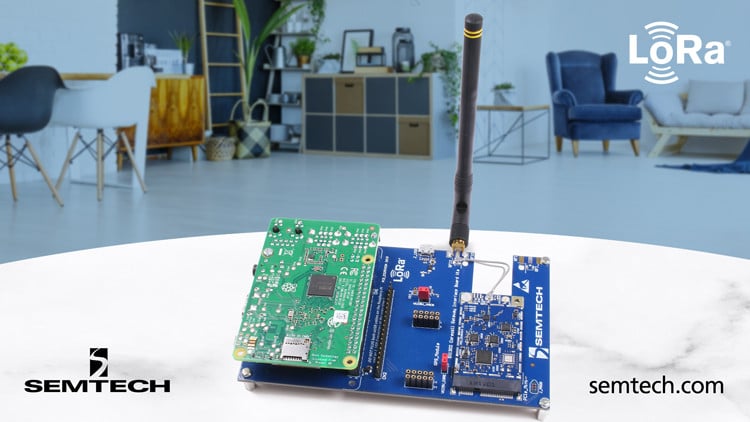
What Is LoRa?
LoRa (Long Range), as described by the LoRa Alliance, is a low power, wide-area (LPWA) technology. It uses license-free, sub-gigahertz RF bands including 433, 868 and 915 MHz. Despite it being a low-power technology, transmission over ranges of up to 10km is possible.
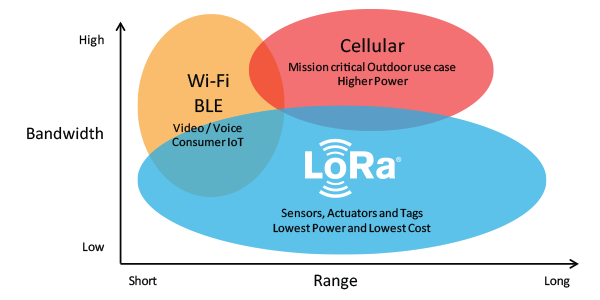
Greater range than WiFi, less expensive than cellular. Image from Semtech
Semtech is one of the founding members of the LoRa Alliance and has placed great emphasis on LoRa and LoRaWAN in their products and resources. In May, Semtech launched a series of resources for engineers to learn about LoRa with their LoRa Basics curriculum. (Semtech also supports education on LoRaWAN, a different but related protocol, through their LoRaWAN Academy program, which has added 46 topics and a new module on power consumption since the launch in May.)
Semtech's new LoRa-based reference design is aimed at making this technology more accessible for designers tasked with tackling smart building device design.
“The LoRa Corecell reference design’s key features, including low power, smaller package and higher integration with improved performance, aim to eliminate design complexity and accelerate time-to-market in the smart home and building industries,” said Pedro Pachuca, Director of IoT for Semtech’s Wireless and Sensing Products Group. He also mentions the consumer-end potential of the technology, highlighting the room occupancy and ambient temperature and humidity monitoring applications that are popular for smart building and smart home applications.
Hardware in the Reference Design
The reference design announced this week is a PCB module.
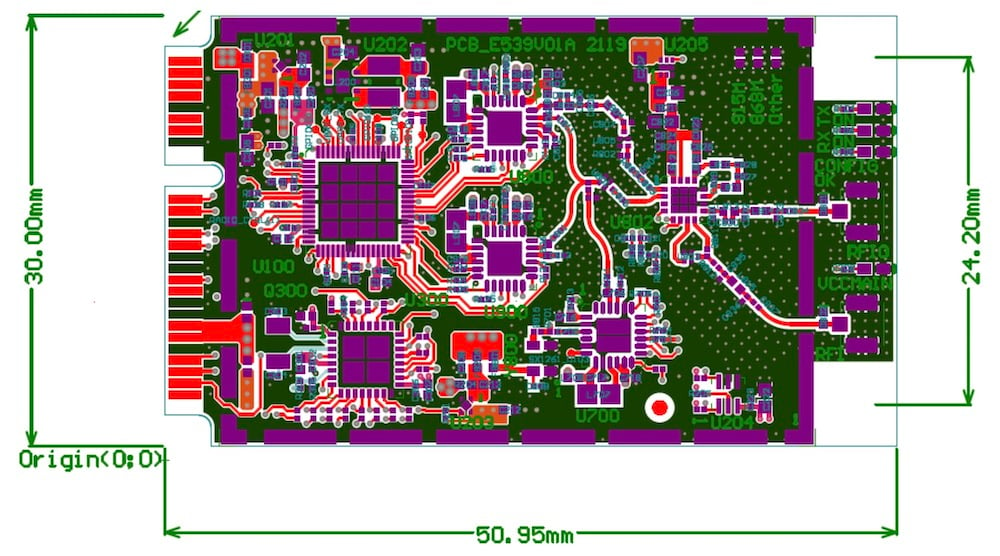
The PCB layout of the Corecell reference design. Image from Semtech
The design is based on two key Semtech ICs: the SX1302 (a LoRa-based gateway transceiver) and the SX1250 (the companion multi-band front end). Both can operate in a -40 °C to +85 °C temperature range.
Semtech claims that these devices, used in the new reference design, will enable engineers to save up to 90% of the power required by legacy products.
The SX1302: LoRa Gateway Baseband Transceiver
When used with the SX1250, Semtech documents say the SX1302 provides up to -141 dBm sensitivity, and also works with the SX1255 and the SX1257. The unit employs a single 32 MHz clock, and is available in a 7 by 7 mm QFN68 package.
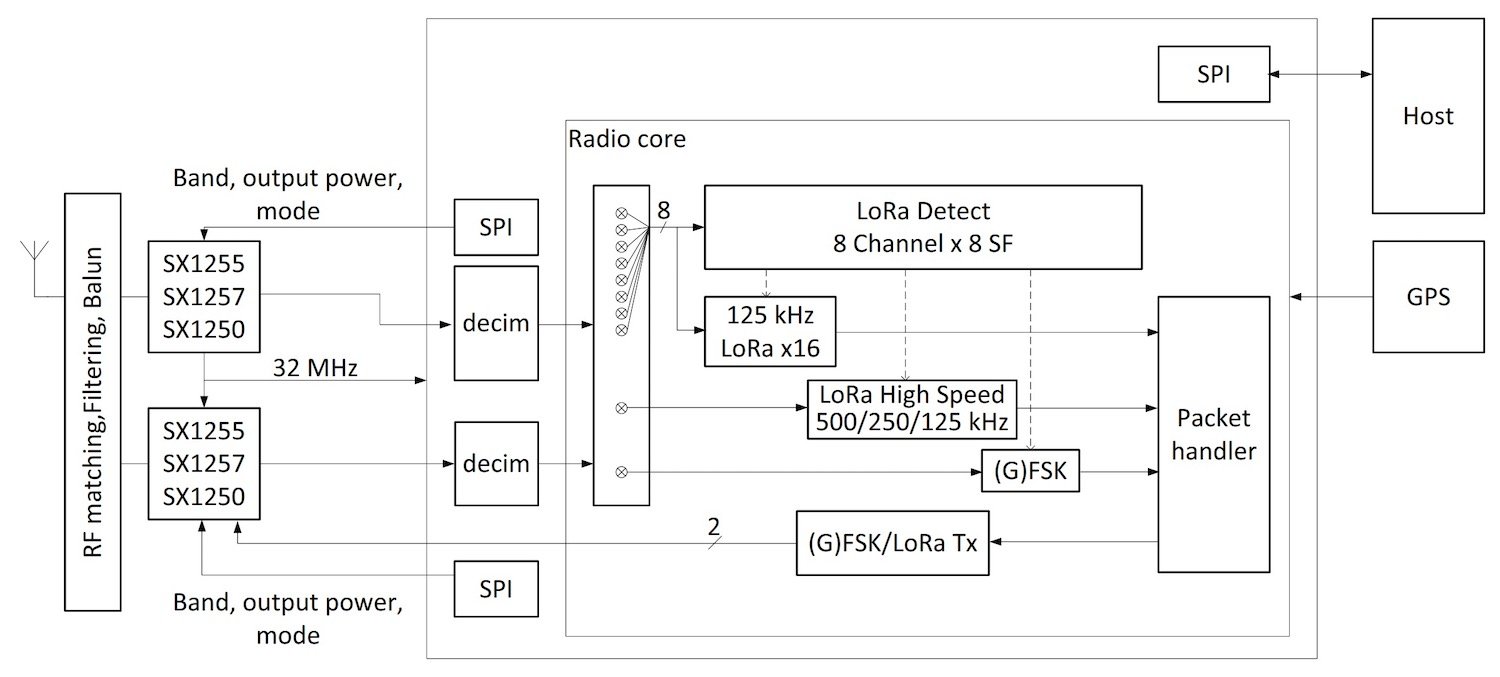
Block diagram for the SX1302. Image from Semtech
The device's key features include:
- LoRaWAN, Class A/B/C, all regions
- 125 kHz LoRa reception with:
- 8 x 8 channels LoRa packet detectors
- 8 x SF5-SF12 LoRa demodulators
- 8 x SF5-SF10 LoRa demodulators
- 125 /250 / 500 kHz LoRa demodulator
- (G)FSK demodulator
The SX1250: Multi-band Sub-GHz RF Front End
The SX1250 has been designed to work with the Semtech’s SX1302. It can cover the 915 MHz band for North America, 868 MHz for Europe, and all others below 1 GHz.
The analog front end can deliver up to +22 dBm output power and can be controlled through the SX1302, a UART, or through an SPI interface.
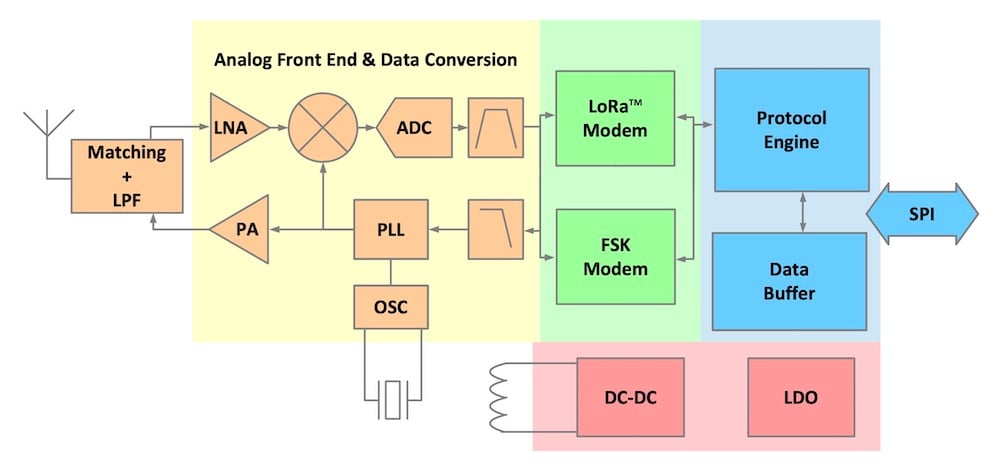
Block diagram for the SX1250. Image from Semtech
The unit is available in a 4 mm x 4mm 24-pin QFN package
Where do you use LoRa in your work? How often do you work with reference designs like this one? Share your thoughts in the comments below.







